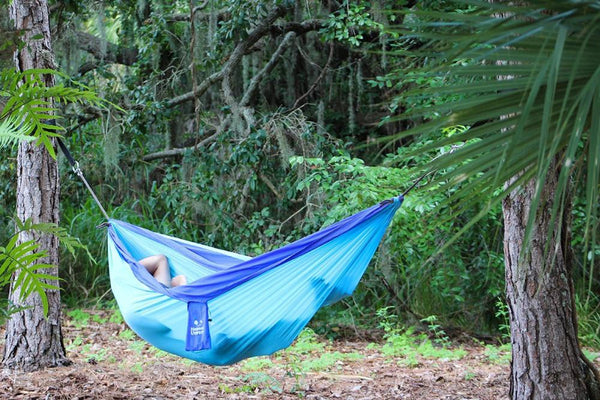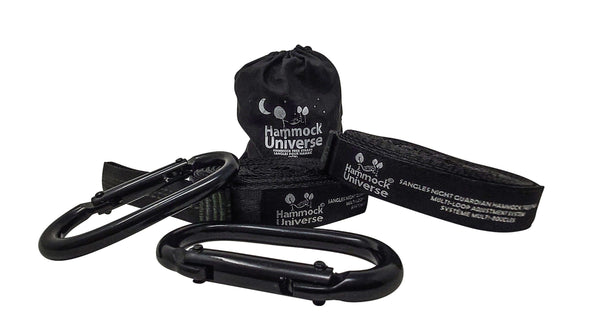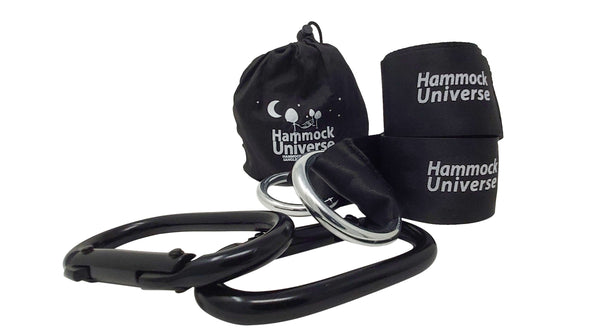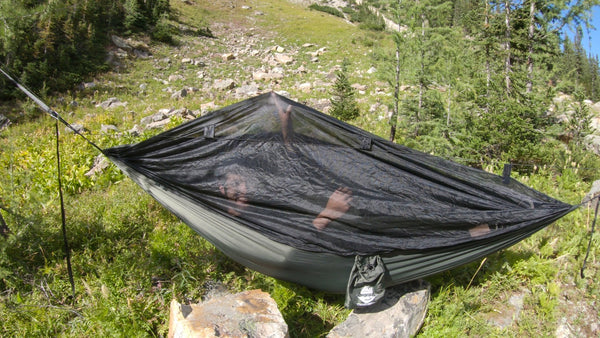FREE SHIPPING on most orders $25+ HAMMOCK BUYING GUIDE
Menu
-
-
Hammocks
-
Hammock Stands
-
Hammocks with Stands
-
Hanging Hammock Chairs
- View all Hammock Chairs
- Brazilian Style Hammock Chairs
- Colombian Hammock Chairs
- Mayan Hammock Chairs
- Mayan Hammock Chairs Deluxe
- Universal Hammock Chair Stand
- U Hammock Chair Stand
- Brazilian Hammock Chair with Universal Chair Stand
- Colombian Hammock Chair with Universal Chair Stand
- Mayan Hammock Chair with Universal Chair Stand
- Mayan Hammock Chair Deluxe with Universal Stand
-
Accessories
- Gift Cards
- Tools and Guides
- Bargain Bin
-
- 1-800-207-4761
- Login

FREE SHIPPING on most orders $25+ HAMMOCK BUYING GUIDE
Climbing and Vertical Camping Safety Basics
September 28, 2018 6 min read
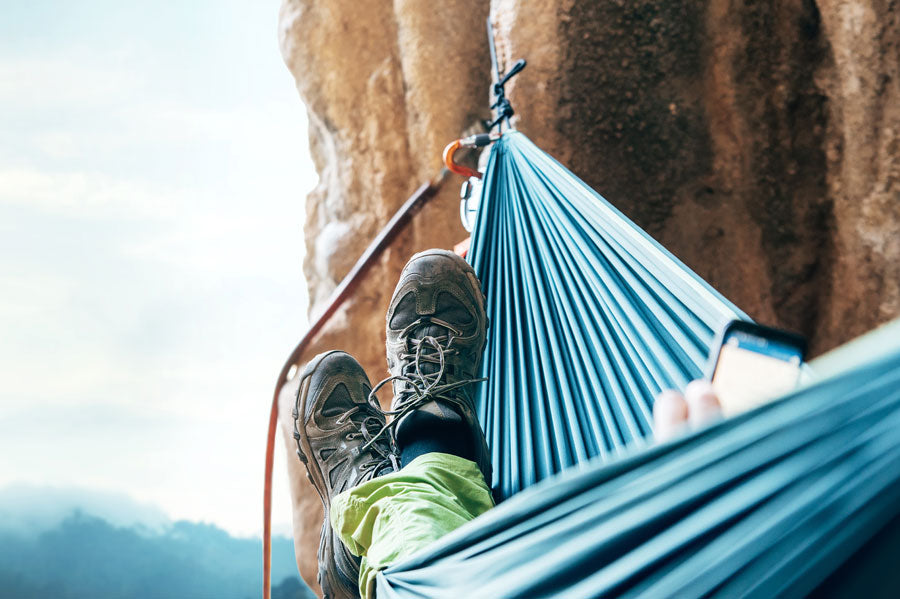
Stay Safe When You Set Up Camp After a Full Day of Climbing
There’s something exhilarating about rock climbing that keeps people coming back, scaling different surfaces, and pushing themselves to the limit.
Last time, we discussed just how amazing it can be to cap off a day’s climb with a hang in your favourite hammock or hanging tent on the side of a mountain. Whether your end goal is the summit or simply an unforgettable adventure, it’s hard to beat vertical camping and hanging out in a hammock suspended high above the ground.
Of course, when you’re hanging out hundreds of feet above the ground, safety must always be your primary concern. This is doubly true if you’re planning on catching some shut-eye while you’re up there!
Not only do you need a good understanding and grounding in rock climbing safety, but you’ve got to flip all your usual camping knowledge and know-how on a 90-degree angle.
Vertical camping isn’t for everyone! If you’re just starting out in the rock climbing world, consider setting extreme cliff camping as a goal for when you get more comfortable.
It’s not for the faint of heart, either, and carries serious risks. What’s more, this type of camping is one of the most challenging types of camping around.
If you’re genuinely interested in getting started, though, we’ve put together a few tips for safety that will let you enjoy what can only be described as one of the most amazing, adventurous experiences available.
Starting at the Bottom
Before you even begin to climb, make sure all your equipment is in good working order.
This means you’ve got a sturdy helmet, comfortable clothes that don’t inhibit your movement, sleeping gear, your hammock, long climbing ropes, pitons…
…and of course, dependable hammock straps.
As you would with all your climbing gear, give your hammock and its straps and fasteners a good test. Make sure everything is working properly and that the hammock and strap materials aren’t showing any undue signs of wear.
Check for:
- Tears
- Holes
- Fraying
- Fading
- Weakness
CAUTION: If you notice any damage, it’s highly recommended that you replace your hammock entirely. While some minor issues can be repaired, you want a high-quality hammock that you can trust will support you while you’re suspended.
Whenever you get into a hammock, sit in it first before swinging your legs in.
Climbing Safety Tips
Run a gear check for your climbing equipment, too.
Before you head out to your climbing site, and before you start to climb, you should check all your equipment to ensure it’s in proper working order and will keep you safe.
Here are a few things to keep in mind:
- Check your harness—are both the climber’s and belayer’s buckles double back? Are the leg loops snug and adjusted to your legs?
- What do the rope and belay device look like? You’ll need a locking carabiner on the belayer’s end for added safety, and the belay device should be properly threaded. Any signs of wear or damage on the rope should be noted, and the rope replaced immediately.
- Do you have enough rope? The longer, the better, in most cases! You need enough to reach anchors and come back down to belay.
- Make sure your clips and anchors are in good condition. Use a minimum of two anchors at the top of a pitch or route; if possible, use three! Redundancy is always a safe bet when climbing.
- Protect your head with a helmet! Even with an experienced belayer, a slip or fall can still mean a hard knock on your head. You’ll also be ready in case of any falling debris. Keep your helmet clean and watch for cracks or damage.
- Know your route and pack accordingly. This means wearing the right clothes, bringing additional rope, additional clips, and anything else you’ll need for a safe and successful ascent.
Knots and Clips: 7 Need-to-Know Tips!
Tying a knot for climbing isn’t rocket science, but it does take some practice.
There are plenty of knots out there that can lend a hand while climbing, but, generally speaking, there are 7 need-to-know options you should practice before you climb:
- The Figure-8 Knot: This is your go-to knot for tying ropes to your harness. It’s easy to inspect, and easy to tie.
- Girth Hitch: If you’re looking to secure slings and packs to your harness, or even a bolt at an anchor, a girth hitch is a great bet and can be tied with one hand.
- Clove Hitch: A must-have for carabiners, the clove hitch is easy to tie and adjust, even with one hand. Make sure you have other backups, though, as these aren’t the best bet for securing yourself to an anchor point.
- Double Fisherman’s Knot: If you need to join two ends of rope, this is your safe and secure bet. In fact, this knot will get tighter over time, so only use it to join pieces of rope!
- Prusik: If you need to attach a piece of cord to your thicker climber rope, this is a great option. You can use it to help ascend a rope, or back up a rappel device.
- Munter Hitch: We wouldn’t recommend using this for anything other than an emergency. It’s a quick solution when you need to rappel with a single locking carabiner.
- Offset Water Knot: Joining two ropes together for a rappel? Use this knot. It’s a reliable go-to that’s easy to tie, untie, and use.
You should always clip your rope through carabiners on quickdraws. Always keep the carabiner gate opposite your direction of travel, and use locking carabiners on important places. Rope should always run back to front when clipped, too.
Vertical Camping Basics
In the climbing world, vertical camping typically takes place on what’s known as a big wall. These are sheer cliff faces that talented climbers scale in teams to keep an eye on each other and help belay for added safety.
Hammocks, hanging tents, and portaledges (literally portable ledges you can secure to a rock face) are all popular camping options, but hammocks are by far the most versatile option thanks to their portability and how quickly they can be set up. They also make it possible to camp on a wider variety of surfaces.
As you start your ascent, it’s important to pace yourself. On a typical hike or camping trip, it’s easy to set up your tent after a long day. Dropping a part or piece of equipment is pretty easy to address.
When you’re halfway up a cliff face, it’s a different story.
After a full day of climbing, you’re likely worn out and ready to catch some shut-eye. You’ll probably be tempted to rush the campsite set up so you can finally take a break. Human error is by far the biggest cause of injuries and fatalities when climbing. Fatigue makes it easy to forget simple details
Take the time to do it right, and set up camp before fatigue really starts to set in.
Setting up Camp: What to Look for And Where to Start
A suitable campsite while climbing is typically a fairly even rock face, though hammocks and other options make it possible to camp in a wide variety of locations.
- Check the surrounding area for possible debris, ice that could melt, or snow that could freeze.
- Try and find a location with some shelter or relief from the wind. Every little bit will help.
- Start by securing pitons and anchors for your hammock or portaledge and your equipment.
- Hang up your equipment first so you can access it easily, and to give your back a break from carrying your gear.
- Next, secure one end of your hammock to an anchor, checking that it’ll hold well before securing the second one.
- Set up a safety line, secured to the wall, and clip it to your harness.
- When you’re safely strapped in, you can remove your main climbing line and settle into your hammock.
- Start by sitting in the hammock first, then swinging your legs. Get comfy, and enjoy your hard-earned break!
Enjoy the View – And Don’t Drop Anything!
When you’re set up in your hammock for a rest, enjoy the experience! Take a breather. You’ve earned it, after all!
The biggest advantage hammocks have over portaledges is, by far, how they hold and secure you. You won’t do much tossing and turning in a hammock, and even if you did, your safety line will secure you.
A portaledge, meanwhile, offers more room to move. As such, you could wake up facing open space, with only your safety line keeping you from rolling over the edge!
Hammocks offer a fantastic vertical camping experience, letting you sway gently in the breeze and keeping you cozy after a long climb. It’s a challenging, difficult experience to set up a hammock after a long climb, but you’ll never forget what it’s like to wake up and look out over the ground below!
Stay safe out there!
Safety First!
When using a hammock*, safety is paramount. Please make sure to follow these important guidelines when purchasing, installing and using a hammock
*(includes Hammock, Hammock Chair, Hammock Stand and Hammock Accessories)
Safety First!
When using a hammock*, safety is paramount. Please make sure to follow these important guidelines when purchasing, installing and using a hammock
*(includes Hammock, Hammock Chair, Hammock Stand and Hammock Accessories)
Related Products
Want to relax?
Join for exclusive content and promotions we only give to our email list!
